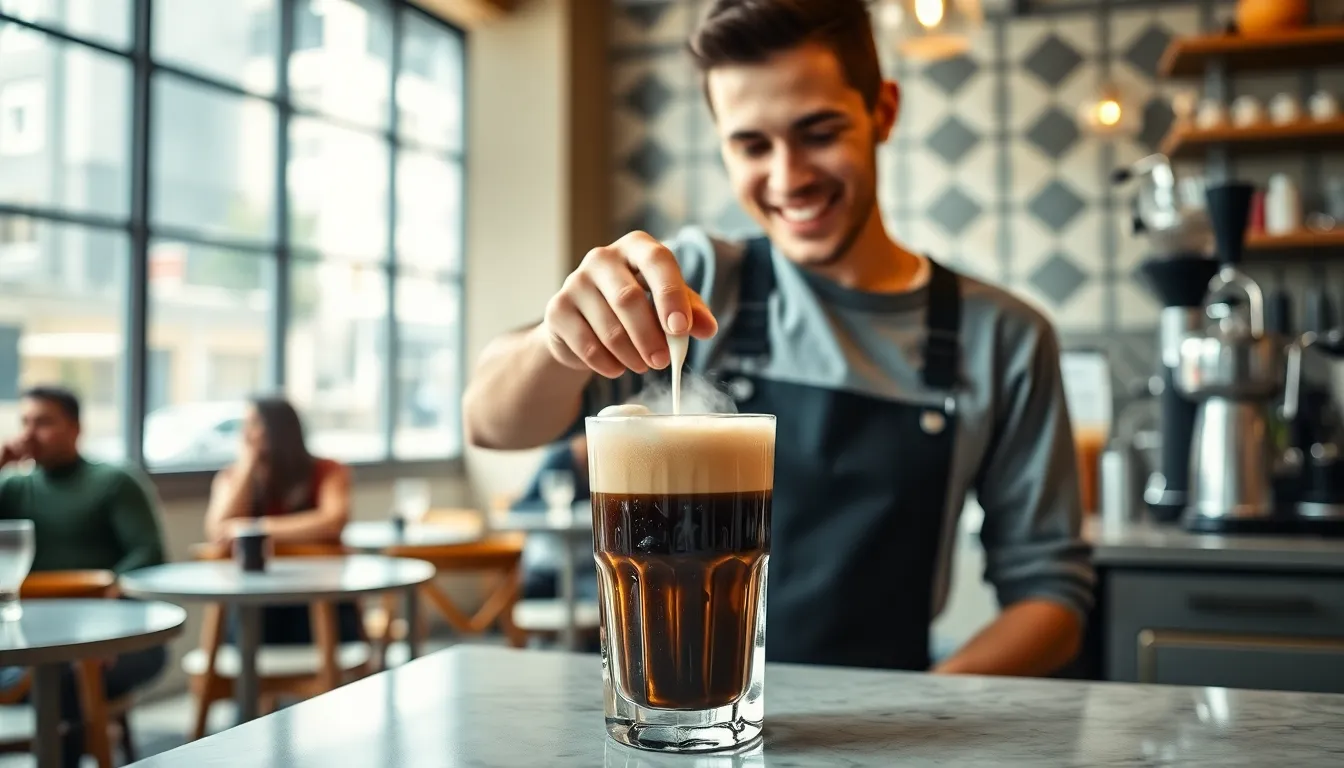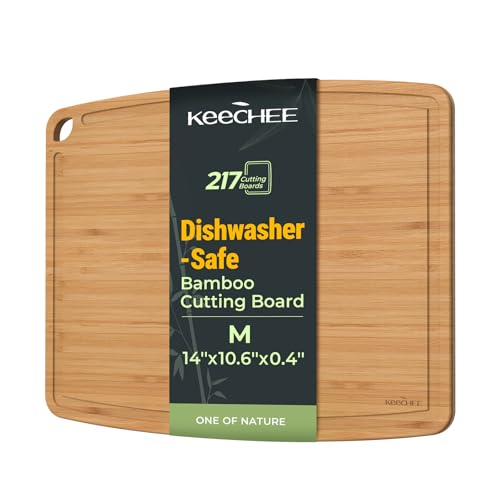Ever wondered about the difference between a Gibraltar coffee and a cortado? These two espresso-based drinks often confuse even seasoned coffee enthusiasts due to their similar appearance and ingredients.
While both feature espresso and steamed milk, subtle differences in serving size, milk texture, and cultural origins set them apart. The Gibraltar gained popularity in San Francisco coffee shops, served in a exact glass that gave it its name. Meanwhile, the cortado has Spanish roots, with “cortado” literally meaning “cut” – referring to how the milk cuts through the espresso’s intensity. Let’s explore these beloved drinks and help you decide which might become your new coffee bar favorite.
What Are Gibraltar Coffee and Cortado?
Gibraltar coffee and cortado are both espresso-based drinks that combine strong espresso with silky steamed milk, but they differ in key aspects including their origins, presentation, and preparation methods. These popular coffee drinks represent exact traditions and techniques in the specialty coffee industry.
The Origins of Gibraltar Coffee
Gibraltar coffee originated in San Francisco around 2005 at Blue Bottle Coffee. This drink gets its name from the Libbey “Gibraltar” rock glass it’s traditionally served in, which holds 4.5 ounces of liquid. Baristas at Blue Bottle created this drink as a quick pick-me-up between preparing customer orders, finding that the exact glass perfectly showcased the balance between espresso and milk. The Gibraltar features a double shot of espresso (about 2 ounces) topped with 2-3 ounces of steamed milk that has less microfoam than a cappuccino but more than a flat white. Coffee enthusiasts appreciate how the Gibraltar’s glass shape affects temperature retention, allowing the drink to cool quickly to an ideal drinking temperature while highlighting the espresso’s nuanced flavors.
Cup Comparison: Size and Glassware
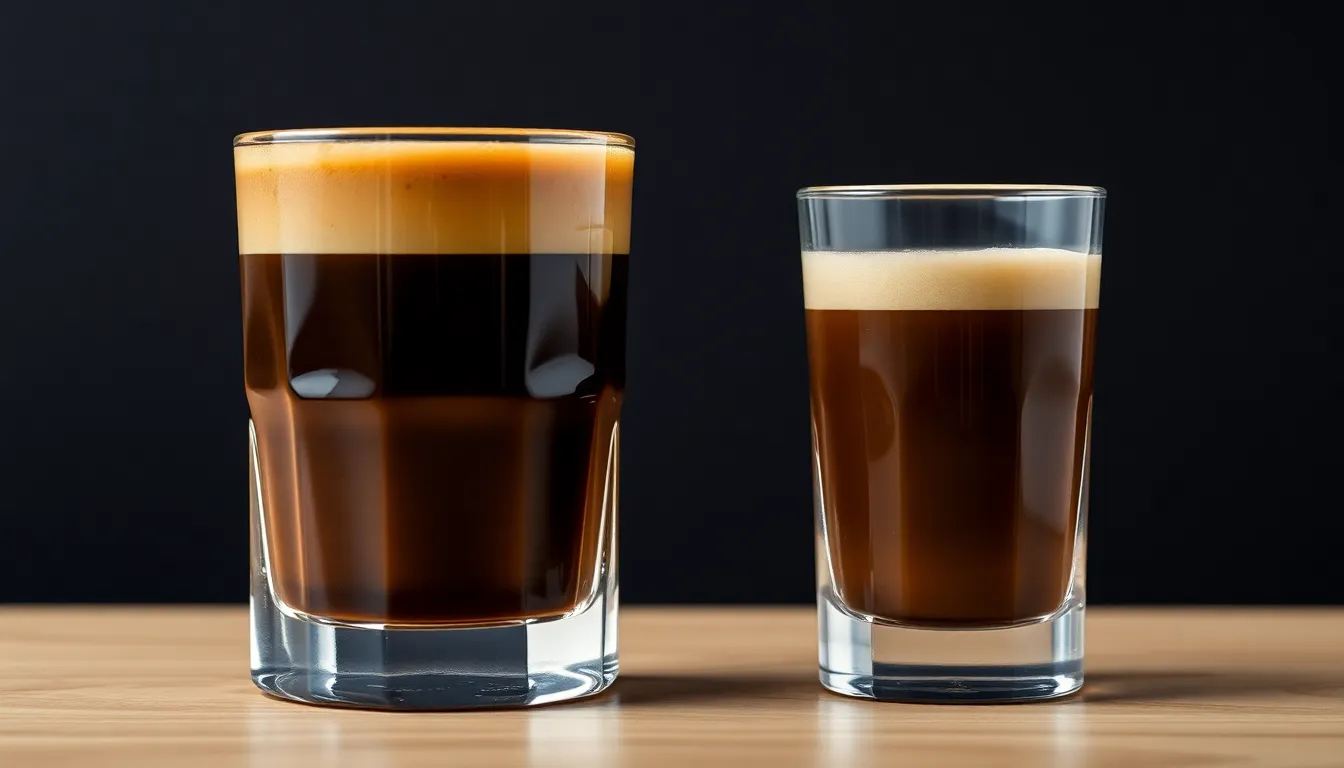
The distinct glassware used for Gibraltar coffee and cortado isn’t just about aesthetics—it fundamentally shapes the drinking experience and reflects each beverage’s unique character. These specialized vessels contribute to temperature retention, flavor profile, and overall presentation.
Gibraltar’s Signature Rock Glass
Gibraltar coffee derives its name from the distinctive Gibraltar glass it’s served in—a small, sturdy cocktail-style rock glass that holds approximately 4.5 ounces (130 ml). This chunky, thick-walled vessel perfectly accommodates the double espresso shot and milk combination that defines the drink. The Gibraltar glass’s wide opening allows you to experience the full aroma of the coffee while its thick walls retain heat effectively. Many coffee enthusiasts appreciate how the glass’s substantial feel complements the bold nature of this drink, creating a tactile experience that enhances the robust espresso and creamy milk balance.
Cortado’s Traditional Presentation
Cortados typically arrive in smaller, slightly taller glasses or cups, usually around 4 ounces (120 ml) in capacity. These narrow, more elegant vessels highlight the cortado’s defining characteristic—equal parts espresso and steamed milk. The traditional presentation often features clear glass that showcases the distinct layering between the espresso and milk. The taller, slimmer profile emphasizes the cortado’s Spanish heritage and its focus on balance. The narrower opening concentrates the coffee’s aroma, directing it toward your nose with each sip, while the glass shape preserves the delicate balance between the espresso’s intensity and the milk’s smoothing effect without diluting either component.
Composition and Ingredients
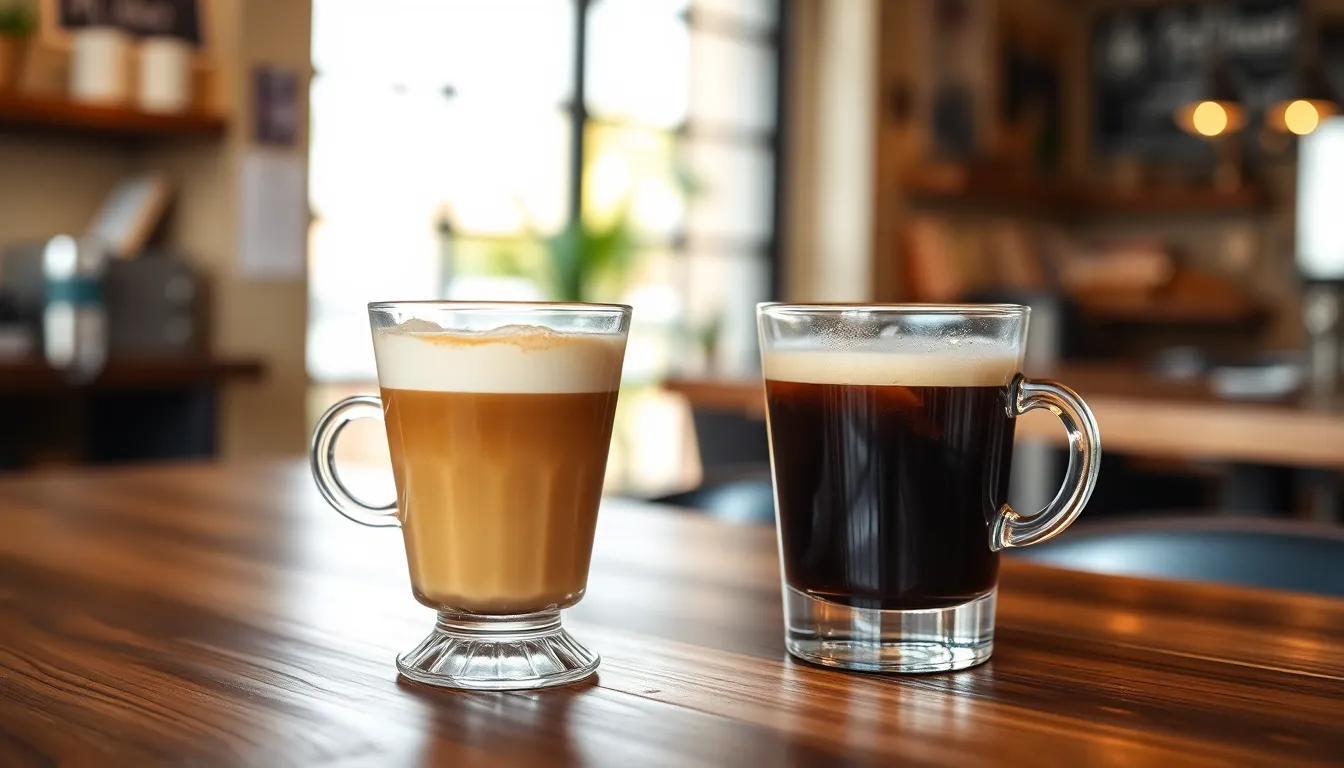
Gibraltar coffee and cortado share fundamental ingredients but differ in their proportions and presentation. Both drinks combine espresso and steamed milk, creating distinctly different flavor profiles even though their similar appearance.
Espresso-to-Milk Ratios
The cortado features a perfect 1:1 ratio of espresso to milk, typically using a single shot (about 1 oz) of espresso matched with an equal amount of steamed milk. This balanced proportion allows the milk to cut through the espresso’s acidity while preserving the coffee’s essential character. The Gibraltar, in contrast, employs a double shot of espresso (around 2 oz) paired with just under 2 oz of steamed milk. This creates a more robust coffee-forward experience with a slightly higher coffee concentration than the cortado. The extra espresso in a Gibraltar delivers a more intense caffeine hit and bolder flavor profile, making it popular among those seeking a stronger coffee taste without sacrificing smoothness.
Milk Texture Differences
Milk texturing sets these drinks apart from other espresso beverages in subtle but important ways. Cortados contain lightly steamed milk with minimal foam, creating a velvety mouthfeel that integrates seamlessly with the espresso. The milk isn’t frothy or airy but silky and smooth, preserving the espresso’s flavor nuances while tempering its intensity. Gibraltar drinks also use steamed milk, though the larger milk volume often results in a creamier overall texture. Both beverages avoid the thick frothy caps found on cappuccinos, focusing instead on a silky integration of milk and espresso. The steaming technique aims to enhance rather than mask the coffee flavor, with the microfoam sitting just beneath the surface rather than floating atop the drink. This texture difference contributes significantly to the unique drinking experience each beverage offers.
Taste Profile Showdown

The true distinction between Gibraltar coffee and cortado emerges when examining their taste profiles. These espresso-based drinks deliver notably different flavor experiences even though their similar components, primarily due to their unique espresso-to-milk ratios and preparation methods.
Gibraltar’s Flavor Notes
Gibraltar coffee delivers a bold, assertive flavor experience that showcases the espresso’s rich character. With a double shot of espresso topped with just under two ounces of steamed milk, this drink maintains a robust coffee-forward profile that coffee purists appreciate. The slightly higher espresso-to-milk ratio creates an intense tasting experience where the deep, complex notes of the espresso remain prominent throughout. Many coffee enthusiasts at Blue Bottle Coffee, where the Gibraltar originated, describe its flavor as having a lingering richness that dances confidently on the palate, combining the strong espresso foundation with subtle milk sweetness for a velvety mouthfeel that persists after each sip.
Cortado’s Distinctive Taste
Cortado offers a more balanced and nuanced flavor profile compared to its bolder counterpart. Using a precise 1:1 ratio of a single espresso shot to one ounce of thinly steamed milk, the cortado achieves a remarkable harmony between coffee intensity and milk smoothness. This equal proportion creates a less acidic cup that highlights the subtle flavor notes of the espresso while the milk gently softens any harshness without overwhelming the coffee character. Coffee shops often serve cortados in small glass or ceramic mugs that complement its elegant taste profile. The drink’s Spanish heritage shines through in its adaptable and forgiving nature, making it particularly appealing to those who find straight espresso too intense but desire more coffee flavor than typically found in milk-heavy beverages.
| Aspect | Gibraltar | Cortado |
|---|---|---|
| Espresso Shot | Double shot | Single shot |
| Milk Volume | Just under 2 ounces | 1 ounce |
| Milk-to-Espresso Ratio | Roughly 2:1 (less milk than espresso) | 1:1 (equal parts) |
| Flavor Profile | Bold, intense, espresso-forward | Smooth, mild, balanced |
| Serving Glass | Gibraltar-style rocks glass | Small glass or mug |
| Caffeine Content | Higher (double espresso) | Lower (single espresso) |
Regional Variations and Popularity
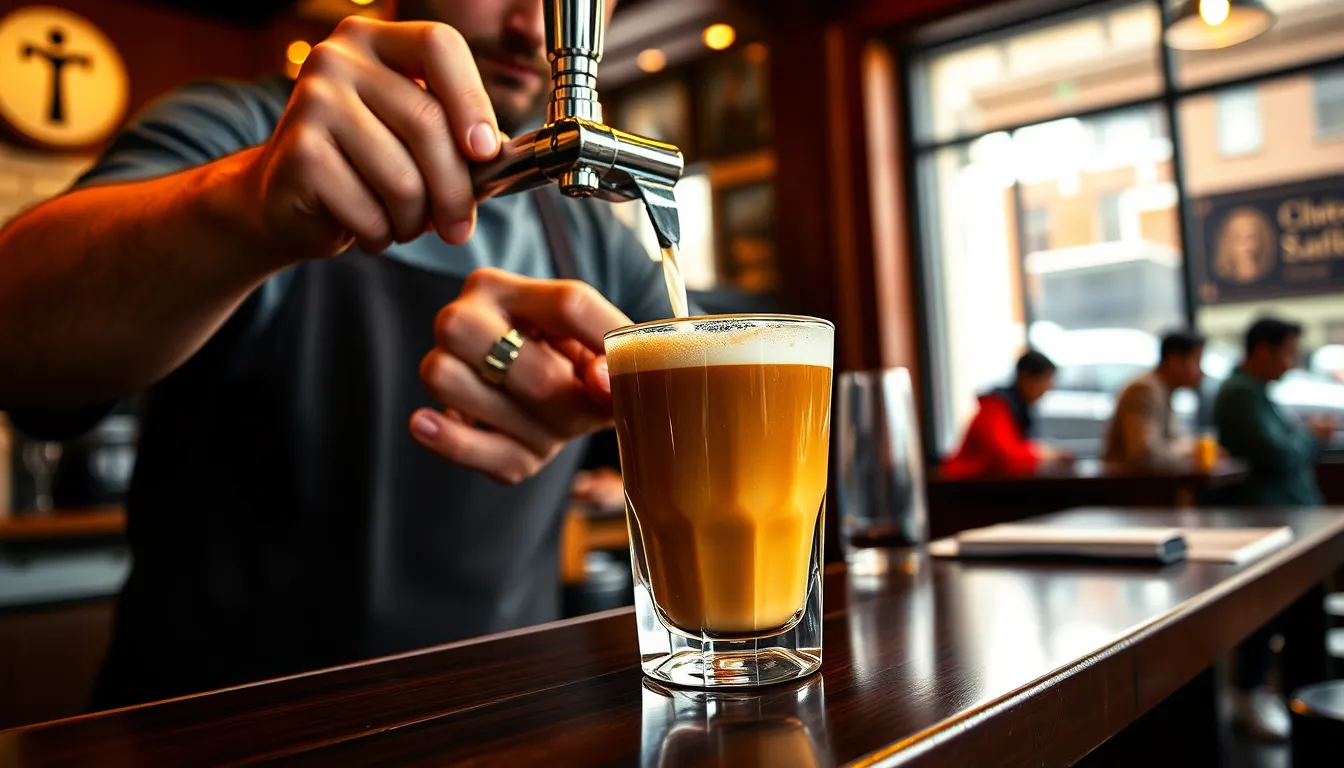
Coffee drinks develop distinct regional identities as they spread across different coffee cultures. The Gibraltar and cortado have emerged with unique geographic associations that influence their preparation, popularity, and cultural significance.
West Coast Gibraltar Phenomenon
The Gibraltar coffee gained prominence specifically within the specialty coffee scene on the U.S. West Coast. This distinctive drink became a symbol of create coffee expertise after its creation in San Francisco coffee shops. Blue Bottle Coffee played a crucial role in popularizing the Gibraltar, where it became emblematic of the third-wave coffee movement. Specialty cafés throughout California, Oregon, and Washington embraced the Gibraltar, serving it in the signature Libbey Gibraltar rocks glass that gives the drink its name. The chunky 4.5-ounce glass became as much a part of the drink’s identity as its double-shot preparation method. Many coffee aficionados consider the Gibraltar a quintessential West Coast creation, representing the region’s innovative approach to coffee culture.
Cortado’s Global Presence
The cortado boasts a more extensive international footprint with deep roots in Spanish coffee tradition. Originally from Spain, this balanced espresso drink has traveled extensively throughout Spanish-speaking countries like Argentina, Cuba, and Mexico, each adding subtle regional variations. The cortado’s simplicity and perfect 1:1 ratio of espresso to milk have made it adaptable across diverse coffee scenes worldwide. You’ll find cortados prominently featured in European cafés, Australian coffee shops, and increasingly in American urban centers. Its versatility extends to home preparation, with many enthusiasts creating versions using Nespresso machines or other home espresso setups. Unlike the Gibraltar’s association with specialty coffee culture, the cortado transcends coffee movements, appreciated equally in traditional cafés and modern specialty shops for its balanced flavor profile.
How to Order Like a Coffee Connoisseur
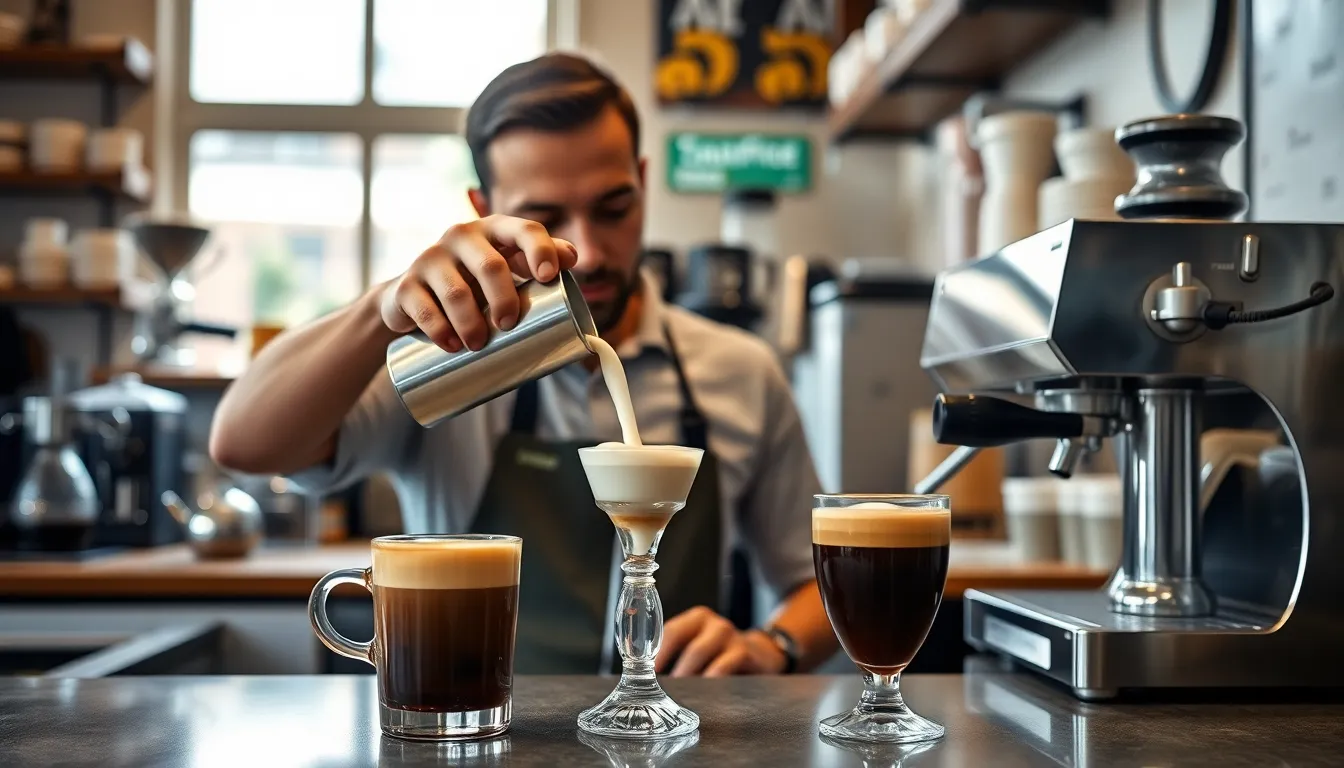
Handling specialty coffee menus becomes simple once you understand the subtle differences between drinks like the Gibraltar and cortado. These insider tips will help you order with confidence and precision at any high-end café.
Specialty Coffee Shop Terminology
Coffee shops use exact language that distinguishes similar-looking drinks. When ordering a cortado, you’re requesting a Spanish-style beverage with a single shot of espresso “cut” with an equal amount of steamed milk and minimal foam. This creates a balanced 1:1 ratio that softens the espresso’s acidity while preserving its flavor profile. The Gibraltar, named after its distinctive glass, contains a double espresso shot with slightly more milk, resulting in a creamier texture but stronger coffee presence. Baristas recognize these terms immediately, but being exact about your preferences ensures you get exactly what you want.
International Ordering Tips
Coffee terminology varies globally, making awareness of regional preferences crucial when traveling. The cortado enjoys widespread recognition internationally, appearing on menus from Madrid to Melbourne with consistent preparation. The Gibraltar, but, remains primarily a specialty coffee shop offering in the United States, particularly popular in San Francisco and other West Coast cities. When visiting Spain, simply asking for a “cortado” typically yields the perfect balance of espresso and milk without further explanation. In countries where English isn’t the primary language, specifying “equal parts espresso and milk with minimal foam” helps communicate your order effectively. Coffee shops in different regions might interpret these drinks slightly differently, so clarifying the espresso shot quantity (single vs. double) prevents surprises in your cup.
Making Gibraltar and Cortado at Home
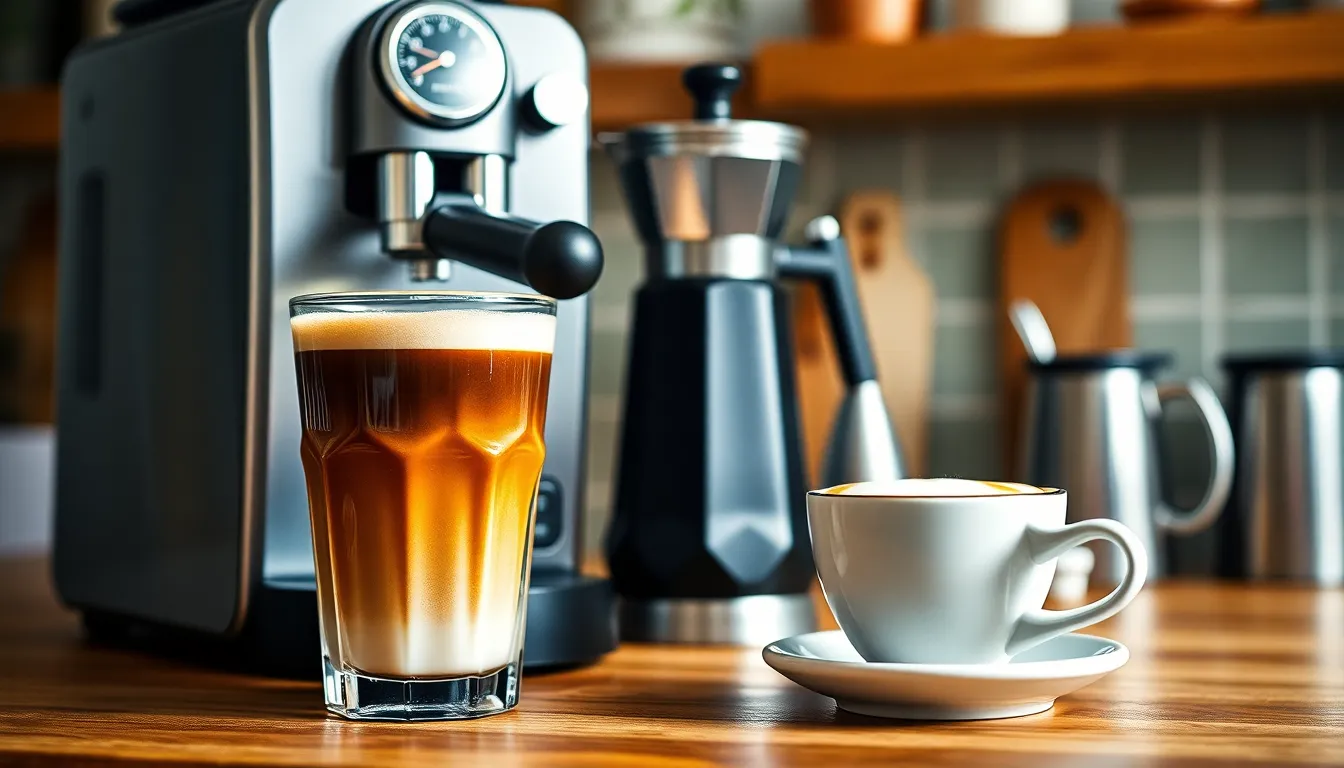
Creating these espresso-based drinks at home lets you enjoy café-quality coffee without leaving your kitchen. With the right equipment and technique, you’ll master both the bold Gibraltar and the balanced cortado in no time.
Equipment Essentials
The perfect Gibraltar or cortado requires exact tools to achieve authentic results. An espresso machine stands as the most important piece of equipment, allowing you to pull proper espresso shots with crema. If you don’t own an espresso machine, alternatives like a Moka pot or Nespresso device can produce strong coffee that approximates espresso. A milk steaming wand or separate milk frother creates the silky, lightly textured milk essential for both drinks. Small, appropriate glassware completes your setup—Gibraltar glasses (4-5 oz thick-walled rock glasses) enhance the drinking experience of a Gibraltar, while cortados benefit from small 4-4.5 oz ceramic cups or glasses that showcase the drink’s equal proportions.
Step-by-Step Preparation Guide
Crafting these drinks requires attention to detail and precise measurements for authentic results.
For a cortado:
- Pull a single shot of espresso (approximately 1 ounce) into your preheated cup.
- Steam milk to about 140°F with minimal froth, creating a silky texture rather than foamy consistency.
- Pour an equal amount of steamed milk (1 ounce) slowly into the espresso.
- Serve immediately to enjoy the perfect balance between espresso strength and milk smoothness.
For a Gibraltar:
- Extract a double shot of espresso (about 2 ounces) directly into your Gibraltar glass.
- Steam just under 2 ounces of milk until it reaches a creamy consistency with minimal foam.
- Pour the steamed milk gently into the espresso, allowing the drinks to integrate naturally.
- Serve right away in the thick-walled Gibraltar glass that gives the drink its name.
The timing matters significantly for both drinks—they’re best enjoyed immediately after preparation when the temperature is ideal and the espresso remains vibrant. Unlike larger milk-based drinks, cortados and Gibraltars don’t feature elaborate latte art, focusing instead on the pure integration of quality espresso and perfectly steamed milk.
Conclusion
Whether you prefer a Gibraltar or a cortado eventually comes down to your taste preferences. The Gibraltar offers a bolder coffee experience with its double shot and distinctive glassware that’s become emblematic of West Coast coffee culture. The cortado delivers a more balanced 1:1 ratio with Spanish roots that have earned global recognition.
Both drinks celebrate the beautiful marriage of espresso and steamed milk without excessive foam or additives. They represent a middle ground between intense espressos and milkier lattes that true coffee enthusiasts appreciate.
Next time you’re at a specialty café or experimenting at home try both to discover your preference. The subtle differences in ratio milk texture and serving vessel create two distinct experiences that are worth exploring for any coffee lover.
Frequently Asked Questions
What is the main difference between Gibraltar coffee and cortado?
The main difference lies in proportions and glassware. Gibraltar uses a double shot of espresso (2 oz) with just under 2 oz of steamed milk, served in a thick-walled 4.5 oz rock glass. Cortado features a 1:1 ratio with a single shot (1 oz) of espresso and equal milk, typically served in smaller 4 oz glasses or cups. Gibraltar offers a more robust coffee experience, while cortado provides a balanced flavor profile.
Where did the Gibraltar coffee originate?
Gibraltar coffee originated around 2005 at Blue Bottle Coffee in San Francisco. Baristas created it as a quick pick-me-up, serving a double shot of espresso with steamed milk in a Libbey “Gibraltar” rock glass. The thick-walled glass was chosen specifically for its ability to enhance the drink’s balance and retain temperature, giving the beverage its distinctive name.
What does “cortado” mean and where does it come from?
“Cortado” comes from Spanish, meaning “cut.” This refers to how the milk “cuts” or balances the intensity of the espresso. The drink originated in Spain and has become popular internationally. Unlike the Gibraltar, which emerged from the American specialty coffee scene, the cortado has deeper historical roots in traditional Spanish coffee culture.
How is the milk texture different between these two drinks?
In a cortado, the milk is lightly steamed with minimal microfoam, creating a velvety mouthfeel that integrates smoothly with the espresso. The Gibraltar features milk with slightly more microfoam than a cortado but less than a cappuccino, resulting in a creamier texture. Both drinks emphasize silky milk that enhances rather than masks the coffee flavor.
Can I make Gibraltar coffee or cortado at home?
Yes, both drinks can be made at home with the right equipment. You’ll need an espresso machine (or alternatives like a Moka pot) and a milk steaming wand. For Gibraltar, pull a double shot of espresso into a thick-walled glass and add just under 2 oz of steamed milk. For cortado, combine a single shot with an equal amount of steamed milk. Serve immediately for optimal flavor.
How do I order these drinks in a coffee shop?
For a cortado, ask for a single shot of espresso “cut” with an equal amount of steamed milk and minimal foam. When ordering a Gibraltar, request a double shot with slightly more milk for a creamier texture. Be aware that while cortado is recognized globally, Gibraltar is primarily found in U.S. specialty coffee shops. Being specific helps ensure you get the drink you want.
Why does the glassware matter for these coffee drinks?
Glassware significantly impacts the drinking experience. The Gibraltar’s thick-walled rock glass (4.5 oz) enhances aroma and heat retention while providing a substantial feel that complements the bold drink. Cortado’s smaller, taller glasses (around 4 oz) highlight the equal parts of espresso and milk, emphasizing the drink’s balance and Spanish heritage. The vessel shapes how flavors are perceived.
Which is stronger, Gibraltar coffee or cortado?
Gibraltar coffee is stronger due to its higher espresso-to-milk ratio. It uses a double shot (2 oz) with just under 2 oz of milk, creating an intense, robust flavor profile that showcases the espresso’s character. The cortado, with its equal 1:1 ratio of espresso to milk, offers a more balanced strength where neither component dominates, resulting in a harmonious flavor experience.

